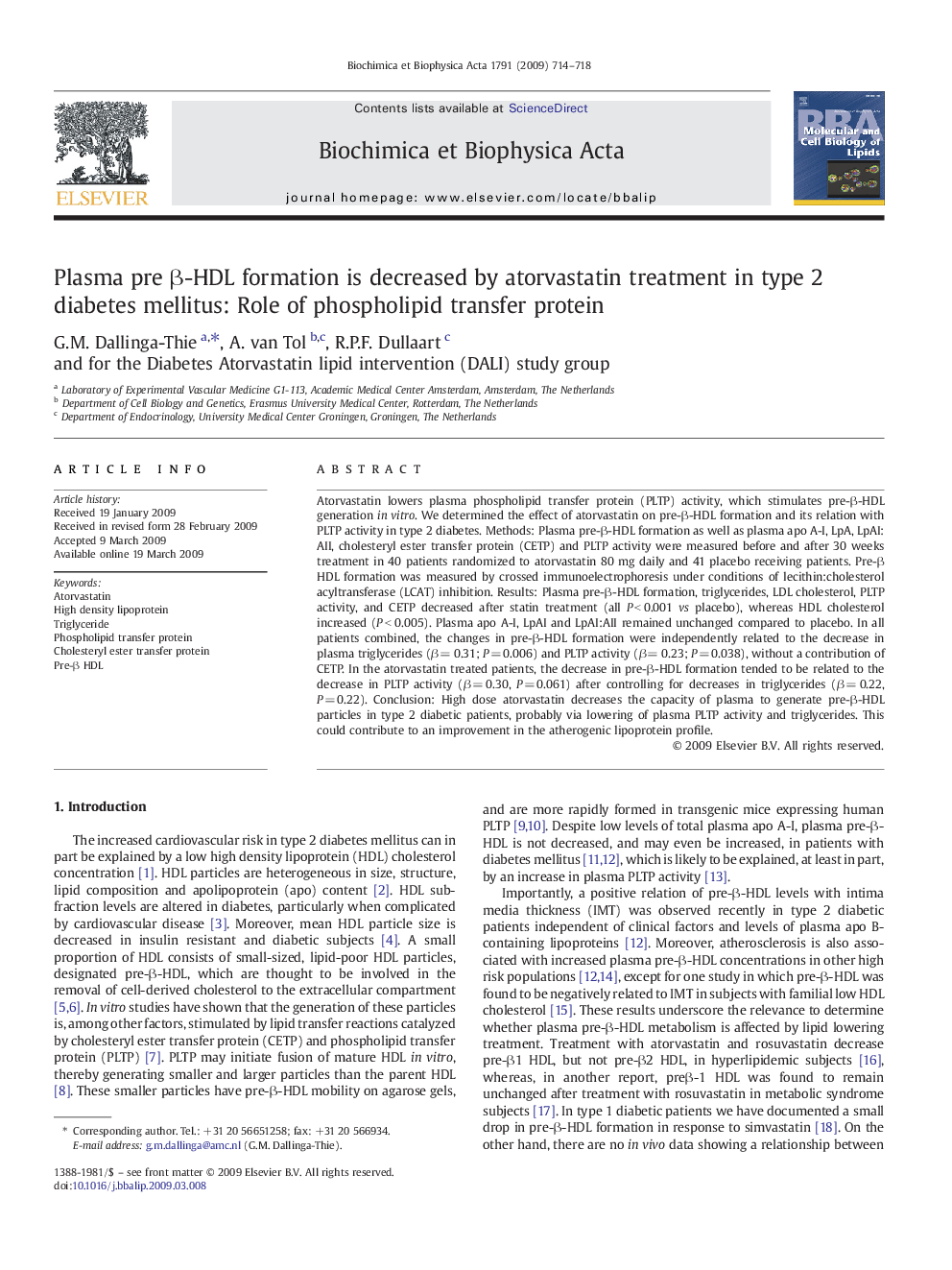| Article ID | Journal | Published Year | Pages | File Type |
|---|---|---|---|---|
| 1949872 | Biochimica et Biophysica Acta (BBA) - Molecular and Cell Biology of Lipids | 2009 | 5 Pages |
Atorvastatin lowers plasma phospholipid transfer protein (PLTP) activity, which stimulates pre-β-HDL generation in vitro. We determined the effect of atorvastatin on pre-β-HDL formation and its relation with PLTP activity in type 2 diabetes. Methods: Plasma pre-β-HDL formation as well as plasma apo A-I, LpA, LpAI:AII, cholesteryl ester transfer protein (CETP) and PLTP activity were measured before and after 30 weeks treatment in 40 patients randomized to atorvastatin 80 mg daily and 41 placebo receiving patients. Pre-β HDL formation was measured by crossed immunoelectrophoresis under conditions of lecithin:cholesterol acyltransferase (LCAT) inhibition. Results: Plasma pre-β-HDL formation, triglycerides, LDL cholesterol, PLTP activity, and CETP decreased after statin treatment (all P < 0.001 vs placebo), whereas HDL cholesterol increased (P < 0.005). Plasma apo A-I, LpAI and LpAI:AII remained unchanged compared to placebo. In all patients combined, the changes in pre-β-HDL formation were independently related to the decrease in plasma triglycerides (β = 0.31; P = 0.006) and PLTP activity (β = 0.23; P = 0.038), without a contribution of CETP. In the atorvastatin treated patients, the decrease in pre-β-HDL formation tended to be related to the decrease in PLTP activity (β = 0.30, P = 0.061) after controlling for decreases in triglycerides (β = 0.22, P = 0.22). Conclusion: High dose atorvastatin decreases the capacity of plasma to generate pre-β-HDL particles in type 2 diabetic patients, probably via lowering of plasma PLTP activity and triglycerides. This could contribute to an improvement in the atherogenic lipoprotein profile.
